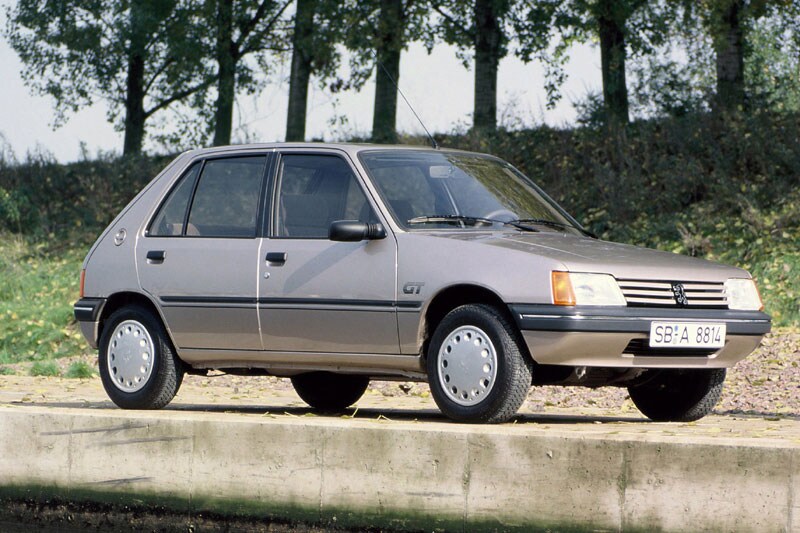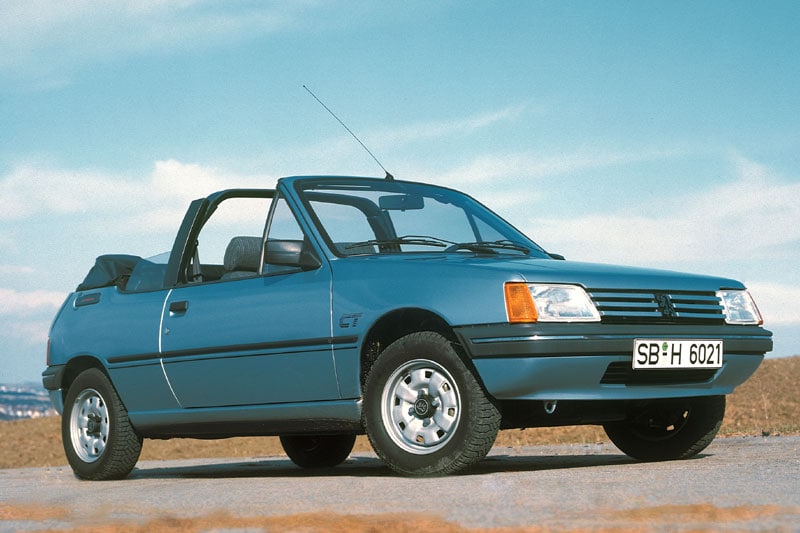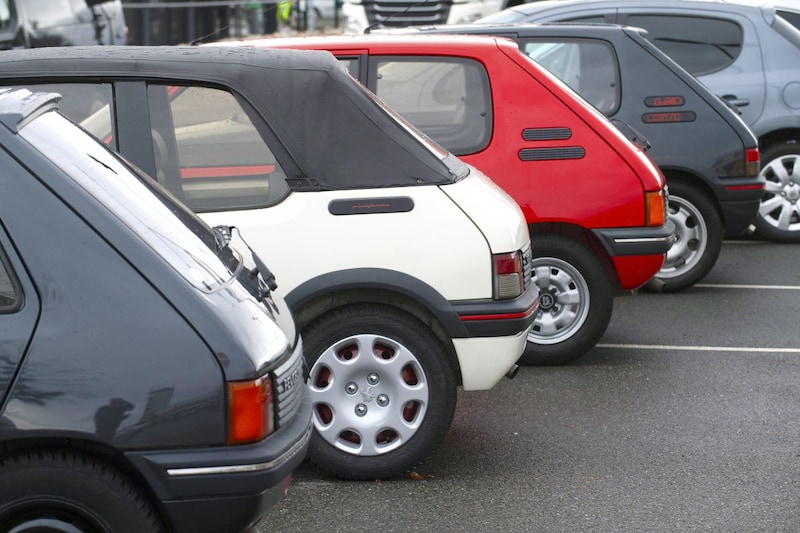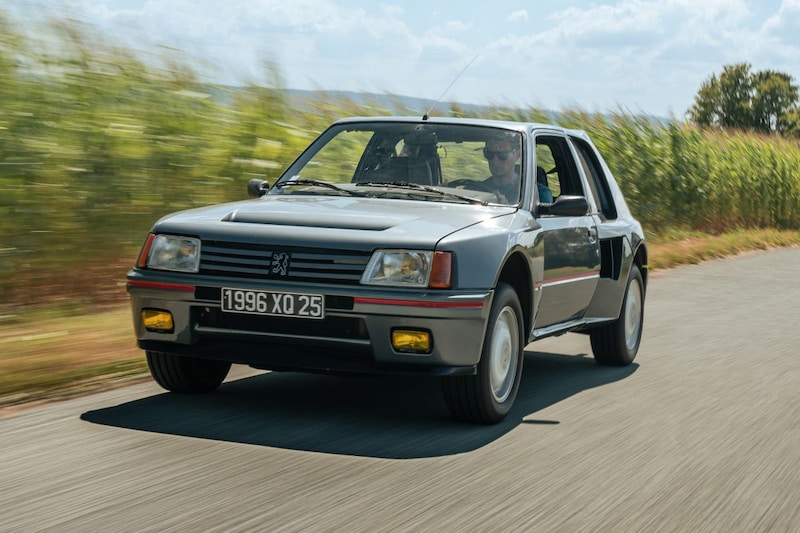a strong number


It has been forty years since the world was introduced to the Peugeot 205. A car that not only won a place in the hearts of many motorists, but was also vital to the Peugeot brand.
It is exactly forty years ago that Peugeot pulled the curtain on perhaps its most important model ever: the 205. The car that may have saved Peugeot from destruction and which in the fifteen years that followed grew into a true icon. From affordable first car to rally gun, from delivery van to hot hatch, from practical five-door to stylish convertible: the 205 had it all. A true direct hit from Peugeot, at the time it could use it very well.
For the beginning of the 205 story, we have to go back to the 1970s. Peugeot tried to get a piece of the pie from the booming market for compact cars and saw with regret that competitors such as Ford, Volkswagen and especially rival Renault scored highly in this. Peugeot did not necessarily do badly with its own 104, but that car had a difficult initial phase. Unlike the competitors, it was not initially a hatchback, essentially because of a deal with Renault. With the 204 Break, it also had an alternative in-house for those looking for a compact five-door. The 104 was a somewhat awkward attempt to join the fairly youthful compact segment, which did not quite fit the then somewhat more conservative Peugeot. With the 1980s approaching, however, the realization came that there had to be a car that had to appeal to a younger audience and that would also be available as a five-door from the outset.
Showing some guts
In 1977 work began on the car that would dry up as the Peugeot 205. The 104 was still used as a rough basis for the design, but it was clear that the new Peugeot needed a much sharper and fresher look. The usually successful collaboration between Pininfarina and Peugeot did not bear fruit in this case; the design proposal from Italy was rejected by Peugeot as it was deemed too conservative. The company’s own design department, led by Gérard Welter, produced a design that was more popular. They would build on that.

This Pininfarina prototype for ‘project M24’ was too conservative for Peugeot’s taste
The fact that Peugeot decided not to be too conservative with the lines for the 205 showed that the French realized that it was time to show a little guts. This was also apparent from the sporting ambitions that were set for the newcomer. Under the leadership of Jean Todt, Peugeot Sport set to work with a rally version of the newcomer for the famous Group B. The road car also had to be prepared for the sportier work.
Ready…
While Peugeot’s financial top wondered what the brand had gotten itself into by acquiring Citroën and then also Chrysler-Simca, a lot of work was being done to prepare the Peugeot 205. It had to replace the 104 and 104 in one fell swoop. Trying to convince 305 customers and, above all, as many people as possible who have not yet driven a Peugeot. After all, the money was desperately needed. Failure was not an option, so Peugeot opened the trickling money tap for the 205 project one more time in the hope of a blessing. February 23, 1983 was the day and the 205 T16 was shown publicly for the first time. A day later, on February 24, the regular five-door 205 appeared. With the T16, Peugeot had of course already attracted attention, but the street 205 also awaited an enthusiastic reception. The first signs were good and Peugeot had already prepared some 205s in the wings at various dealers to fill the greenhouse.

This is how the world got to know the Peugeot 205; as a five-door
Unlike the 104, the 205 was the same as a five-door. In fact, the three-door would only appear roughly a year later, although the 205 T16 secretly gave a hint of how Peugeot would shape its C-pillar. The Peugeot 205 not only made a good impression with its lines. It also proved to be quite roomy for its size, especially in the trunk. This was due to the trailing arms with torsion bars at the rear. Speaking of suspension, the fully independent suspension with MacPhersons in the front helped the 205 to get hands on with its handling and comfort. However, the 205 had a nice tendency to lean over when it went faster in the corners.
Peugeot 205 GTI
From a motor point of view, the 205 was less controversial, because in the beginning Peugeot simply siphoned in the carburetor engines already known from, among other things, the 104 that had emerged from cooperation with Renault. In 1984, not only the three-door 205 appeared, but also the version that, among other things, opened a new chapter in terms of motor technology: the 205 1.6 GTI. With the GTI, the 205 naturally showed its best side (if we leave the T16 aside for a moment). It not only had thicker furnishings and a sportier chassis than the regular three-door, but also had the new 1.6 of the XU engine family in its nose. Initially, the injection engine delivered 104 hp, which would later become 117 hp thanks to a different cylinder head and larger valves. With the 205 GTI you could be really fast when things got a bit more twisty and it took over hot hatchcountry is therefore in charge of the former benchmark Volkswagen Golf GTI. However, the 205 GTI had to be careful when releasing the gas in a fast corner. Sudden oversteer moments also gave the 205 GTI the reputation of a widowmaker to be.

Peugeot 205 GTI
a strong number
Eventually the XU engines (later succeeded by the TU) would be spread over the entire range and of course there were also the diesels. Especially the blown 1.8 diesel, which appeared later, attracted a lot of attention. The atmospheric diesels also knew what to do with the light 205, although they had to have the distinctive feature that they seemed to last almost forever. In any case, the 205 turned out to be nice for the longer term. Not only as a model, but also in terms of build quality. The 205s from the first years were not yet the best in terms of rust prevention, but later on the 205 (certainly compared to previous Peugeot models) would turn out to be quite easy to evade the rust devil. Notable technical problems actually did not really arise, provided that things were properly maintained.
In a period of no less than fifteen years, we would become acquainted with many different versions and versions. The crème de la crème of the series production 205 was of course the 1.9 GTI before the catalytic converter obligation. Those who wanted to keep it a bit more affordable could also have a lot of fun with the Rallye or the XS, each of which had a sporty nature in its own way. Did you want to drive open? That was also possible: Pininfarina may not have drawn the 205, but it did put the convertible on paper. You could also get it as a CTI, with which you could approach the sporty performance of the GTI with your hair in the wind. There were also plenty of action models and special versions, such as the Accent, Roland Garros, Trophy, Gentry, Forever and goodbye version Génération.

Peugeot 205 Accent
5.3 million
With the latter, the curtain really fell for the 205 in 1998. At the last minute, Peugeot sold bunches of the now quite aged model here in the Netherlands, because the 205 Génération is a brand new and fully equipped car for a relative trifle. had. A car that, moreover, still looked good despite its age. After more than 5.3 million copies sold (of which more than 140,000 in the Netherlands), it was really over and the 205 left a Peugeot with a well-filled greenhouse and a much improved image.
Now, 25 years later, there are still more than 5,000 pieces left here in the Netherlands. Due to its age, the 205 is increasingly exchanging the role of ‘cheap first car’ for that of an enthusiast’s car. That was of course already the case for the special versions, but the regular 205s are also being cherished more and more. On September 17, the Dutch Peugeot 205 club celebrates its anniversary and you can count on it that there will be even more international attention this year. On to the 50 years 205!
Do you have special memories of the Peugeot 205? Let me know in the comments!
.
– Thanks for information from Autoweek.nl





















